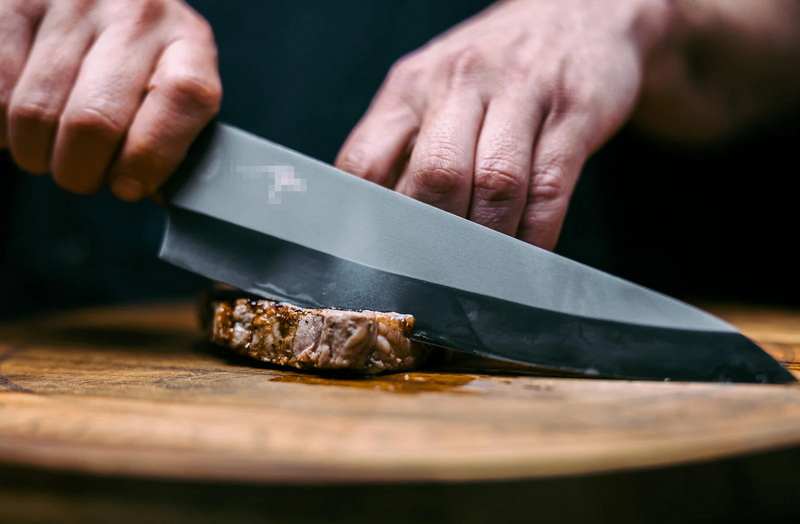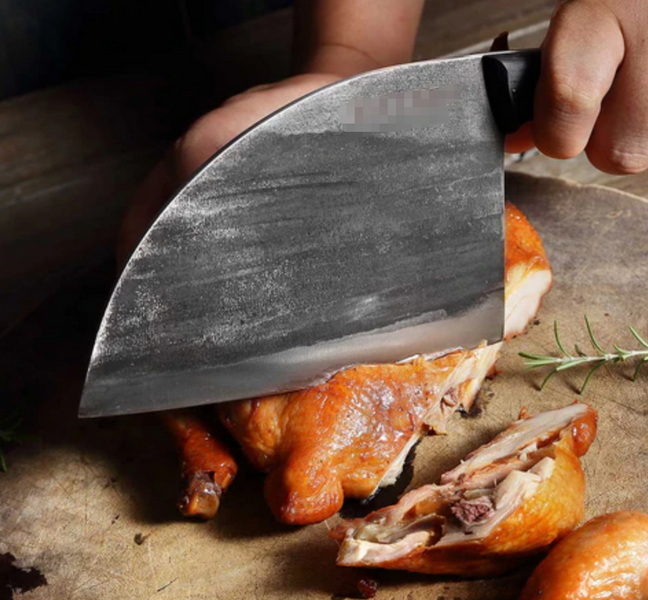- All
- Product Name
- Product Keyword
- Product Model
- Product Summary
- Product Description
- Multi Field Search
Views: 222 Author: Ann Publish Time: 2025-07-19 Origin: Site











Content Menu
● Why the Right Kitchen Knife Matters
● Types of Kitchen Knives for Different Tasks
>> Chef's Knife – The Ultimate All-Rounder
>> Paring Knife – Precise Control for Small Tasks
>> Serrated Knife – Effective for Bread and Tomatoes
>> Utility Knife – The Versatile Secondary Knife
>> Boning Knife – Specialized for Meat and Fish
● Best Kitchen Knives for Specific Cutting Tasks
>> Cutting Meat
>> Herb and Delicate Ingredient Preparation
>> Bread and Hard-Skinned Fruits
>> Specialty Knives for Gourmet Tasks
● How to Maintain Your Kitchen Knife for Longevity
● How to Choose the Perfect Kitchen Knife
● Frequently Asked Questions (FAQs)
>> Q1: What is the best all-purpose kitchen knife?
>> Q2: How often should I sharpen my kitchen knife?
>> Q3: Can I use the same knife for cutting both meat and vegetables?
>> Q4: What blade material is best for kitchen knives?
>> Q5: How should I store my kitchen knives safely?
In every kitchen, a high-quality kitchen knife is an indispensable tool, crucial for handling ingredients efficiently and safely. Whether it's cutting meat, slicing vegetables, or performing delicate operations such as chopping herbs or fish fillets, a suitable knife can make a significant difference. As a professional kitchen knife manufacturer in China that provides OEM services for international brands, this article offers a comprehensive and professional guide on the best kitchen knives for various cooking tasks. We include detailed descriptions, usage suggestions, maintenance tips, and rich visual content. This expanded guide also addresses common questions and concludes with a practical summary.

Choosing the right kitchen knife affects not only your cooking efficiency but also your safety and the quality of your dishes. A well-balanced knife with a sharp, durable blade allows you to slice through meat smoothly, dice vegetables uniformly, and chop herbs without bruising. It cuts down preparation time and reduces hand strain. While the market offers a vast range of knives, the classic chef's knife remains the most versatile and essential for everyday kitchen use.
A chef's knife is the cornerstone of any kitchen arsenal. It typically features an 8-inch blade with a slight curve, perfect for rocking motions when chopping vegetables or slicing meat. The blade's width also facilitates easy scooping and transferring of chopped ingredients. Models like the Mac MTH-80 and Wüsthof Classic 8” are industry favorites due to their razor-sharp edges, excellent balance, and ergonomic handles.
The paring knife features a small, pointed blade that excels in delicate preparation like peeling, trimming, or segmenting fruits. It also works well for intricate cuts such as deveining shrimp or hulling strawberries.
Serrated knives possess jagged edges that grip surfaces, allowing clean cuts through crusty bread, tomatoes, or citrus without crushing them. Their teeth-like blade makes them irreplaceable for foods with tough exteriors but soft interiors.
Between the smaller paring knife and larger chef's knife, the utility knife covers medium-sized tasks. Its blade ranges from 4 to 7 inches, ideal for slicing sandwiches, cutting smaller cuts of meat, or trimming vegetables.
Boning knives have thin, flexible blades designed to separate meat cleanly from bones. Their flexibility helps maneuver around joints and cartilage without damaging the meat fibers or wasting precious flesh.
When handling raw or cooked meat, precision and sharpness are paramount. A dull knife can tear and bruise meat fibers, resulting in uneven cooking and compromised texture. Chef's knives with hardened steel blades, such as the Wüsthof Classic 8”, deliver clean, precise cuts. Boning knives are invaluable for deboning poultry and fish, making the process less wasteful.
Japanese-style knives like the Tojiro F-808 shine in vegetable prep with their thin, razor-sharp edges. They allow for ultra-fine slicing, julienne cuts, and dicing thanks to their precise craftsmanship. The sharper edge also means less bruising and oxidation, preserving taste and nutritional value.
For herbs and other fragile ingredients, a lightweight, finely balanced knife is best. The Mac MTH-80 excels here, reducing bruising and oxidation of delicate aromatics, which helps maintain vibrant flavors and colors during cooking.
Serrated knives are better suited to slicing bread and fruits like pineapples or melons. Their saw-like teeth easily penetrate tough exteriors without crushing the softer interiors.
- Santoku Knife: Popular in Japanese kitchens, santokus are multipurpose knives with a shorter, thinner blade suited for thin slicing, dicing, and mincing.
- Cleaver: Ideal for chopping through bones and thick cuts of meat, the heavy cleaver is a must-have for butchers.
- Fillet Knife: Featuring an extra-flexible blade, fillet knives are designed for skinning and filleting fish with precision.

Proper care enhances the sharpness, hygiene, and lifespan of any kitchen knife.
- Regular Honing: Before or after each use, run your knife along a honing steel to realign the microscopic teeth of the blade edge.
- Periodic Sharpening: Depending on use frequency, sharpen your knife with whetstones every 3 to 6 months. Professional sharpening services ensure a precise edge.
- Hand Washing Only: Always hand wash knives with mild soap and dry immediately. Dishwashers damage blades through heat and abrasive detergents.
- Proper Storage: Use a knife block, in-drawer sheath, or magnetic strip to safeguard blade edges and prevent accidents.
- Avoid Hard Surfaces: Cut on wood or plastic cutting boards rather than glass or granite, which dull blades faster.
When shopping for a kitchen knife, bear in mind:
| Feature | Consideration | Ideal Choice |
|---|---|---|
| Blade Material | High-carbon stainless steel for sharpness and corrosion resistance | Mac MTH-80, Wüsthof Classic |
| Handle Design | Ergonomic, non-slip for comfort | Wood, composite, or polymer handles |
| Blade Size | 8-inch for chef's knife; smaller for paring; specialized based on task | Depending on primary use |
| Balance and Weight | Heavier for chopping; lighter for slicing and precision | Personal preference and handling |
| Maintenance Needs | Frequency of sharpening and honing | Whetstone-friendly blades preferred |
The kitchen knife you choose directly impacts how enjoyable and efficient your cooking experience will be. Highly versatile knives like the Mac MTH-80 or Wüsthof Classic 8” chef's knives provide outstanding service for cutting meat, chopping vegetables, and handling a multitude of kitchen tasks. Complementing these with specialty knives such as boning, paring, and serrated knives allows you to tackle any job with confidence and precision. Maintaining knives through regular honing, professional sharpening, and careful cleaning preserves their sharpness and longevity. As an experienced OEM kitchen knife manufacturer based in China, we are committed to delivering customized and high-quality blades tailored to your brand's needs and culinary demands.

A1: The Mac MTH-80 chef's knife is highly praised for its sharpness, comfortable handle, and durable blade, making it suitable for most kitchen duties including cutting meat and vegetables.
A2: Sharpen knives every 3 to 6 months depending on use. Regular honing before or after cooking extends blade sharpness.
A3: Yes, a chef's knife is designed for versatility. However, using separate knives can prevent cross-contamination, improving hygiene.
A4: High-carbon stainless steel strikes an excellent balance between sharp edge retention and corrosion resistance.
A5: Store knives in knife blocks, magnetic strips, or blade guards to protect edges and prevent accidents.
The Ultimate Professional Knives for Halal Butchery in Middle Eastern Kitchens
Chef Knife Size Guide: Choosing Between 6″, 8″, 10″, And 12″
Custom Knife Handles: How To Design A Chef Knife That Fits Your Hand Perfectly
Chef Knife Surface Treatments Guide: From Polished Migaki To Damascus Patterns
Inside Our Professional Knife Sample Room: Quality You Can See
Universal Knife Block Buying Guide: Modern Acrylic & ABS Knife Holders for Professional Kitchens
Universal Knife Block: The Complete Guide To Modern, Hygienic Knife Storage
The Complete Guide To Red Handle Knife Sets: Style Meets Functionality in The Kitchen
Professional Knives for Halal Butchery And Middle Eastern Cuisine